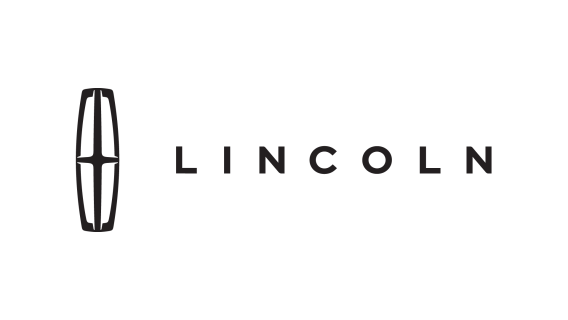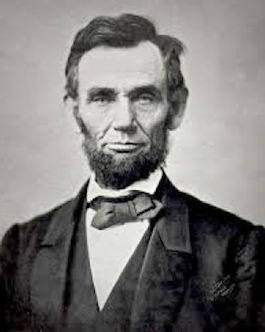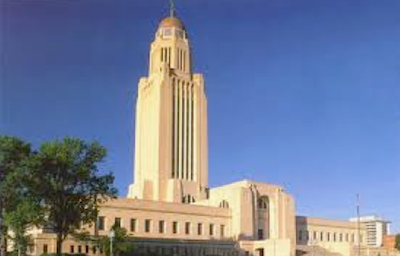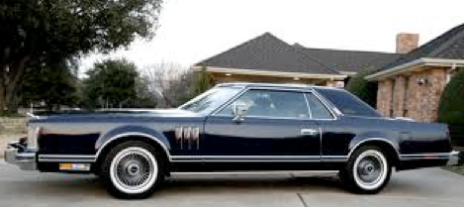Simplicity is the Ultimate Sophistication
Avoid Temptation
Fracking Sand
Last week’s column was titled “Tesla Motors — The Car, The Company and The Stock,” which brought this response from clever reader Bob Askey of Longmont, Colorado.
“I await your next column: Lincoln: the man, the city, and the car.”
At first we laughed. But a couple of hours later, as I was walking my dog on my lunch break (a great time for thinking), I thought, why not? If I do it, I’ll learn something, and hopefully, I can help you learn something, too.
So here goes.
About Lincoln, the man, I claim no special knowledge. He was one of our very best presidents, in part because he was presented with one of our very biggest challenges, and he successfully met it, abolishing slavery and reuniting the nation.
Notably, his wife was little help; it’s not true that behind every great man is a great woman.
From today’s perspective, it’s interesting to note that once the South had seceded from the union, the majority of the remaining members in Congress were on Lincoln’s side, and thus far more cooperative than the current recalcitrant group in Washington.
Lastly, it was only six days after he accepted the surrender of Robert E. Lee that Lincoln was assassinated.
We have little idea what Lincoln might have done with a full life, but we can almost certainly say that he went out on top.
If you want more information, you can choose from the roughly 15,000 books that have been written about Lincoln.
---
As to Lincoln, the city, the first question is which one?
There are 17 cities/towns named Lincoln in the U.S., but the king of them all is Lincoln, Nebraska, the second largest city in the cornhusker state.
It began life as a little village named Lancaster, and the story of how it came to be named Lincoln is interesting.
The big city then, as now, was Omaha, located 55 miles northeast on the banks of the Missouri River. But when Nebraska was declared a state in 1867, the majority of the state’s residents, who lived south of the Platte River, argued that the capital should be located more centrally, and little Lancaster, which had only a few dozen residents, but great potential for growth, was nominated.
But Omaha’s powerbrokers wouldn’t give up without a fight, so one of them slyly proposed that the new capitol be renamed Lincoln, knowing that many residents from the southern part of state had been sympathetic to the Confederate cause in the recently concluded Civil War and would be averse to having a capital named for their recent enemy.
The measure passed anyway, and Lincoln has been growing ever since, with the exception of a big setback in the depression of the 1893.
Today, the city is notable for its university, its sports teams, and above all (literally) for its State Capitol building, designed by Bertram Grosvenor Goodhue and constructed between 1922 and 1932.
A skyscraper topped by a golden dome on which stands a 20-foot statue of a farmer sowing grain, it’s the second tallest State Capitol building in the U.S., behind the Louisiana State Capitol building in Baton Rouge. City zoning rules prohibit the building of any taller building, and that seems fine given that Lincoln—unlike cities like Boston and New York—still has enormous potential to grow horizontally.
Notable products of Lincoln include:
William Jennings Bryan — Statesman
Johnny Carson — Entertainer
Wila Cather — Author
Dick Cavett — Entertainer
Joba Chamberlain — Baseball Pitcher
Dick Cheney — Vice President
Harold Edgerton — Scientist (I once worked at EG&G, of which he was the E)
Bob Kerry — Senator
John Pershing — Army General
Theodore Sorensen — Presidential Advisor
Hilary Swank — Actress
It’s a good city. In fact, in 2013, Lincoln was ranked #1 on the Gallup-Healthways list of “Happiest & Healthiest” cities.
---
Moving on to Lincoln, the car.
This is a Mark V, like the one my father-in-law once owned. With a deep red leather interior, he loved that car.
But the story starts way back in 1917, when Henry Leland, a former manager at the Cadillac division of General Motors, formed the Lincoln Motor Company with his son Wilfred. He named the company for his hero, Abraham Lincoln.
The company assembled Liberty aircraft engines in WWI, but by 1922 it was bankrupt—which made a man named Henry Ford happy. You see, Ford had been forced out of his second company (Detroit Automobile Company) by a group of investors led by Leland. That company was renamed Cadillac and purchased by General Motors, and Ford was thrilled to purchase Lincoln in order to compete with his old rivals.
Ford paid $8 million for the company, and by the end of 1923, the company was operating at a profit. In the decades since, the rivalry between Lincoln and Cadillac has continued, with both achieving the ultimate honor of being used as presidential limousines.
The first Lincoln built for that purpose was the 1939 “Sunshine Special” used by Franklin D. Roosevelt. The most famous of the limos is the 1961 Lincoln Continental that John F. Kennedy was riding in when he was assassinated. The last Lincoln to serve as a presidential limo was the Town Car used by George H.W. Bush. All subsequent Presidents have used Cadillacs.
Lincoln, of course, is not giving up the fight. But the odds are with General Motors right now, not least because the federal government still owns part of the company.
In any event, business is not what it used to be. Lincoln’s best year was 1990, when 231,660 vehicles were sold. Last year, the division sold just 88,290 vehicles in the U.S. and Canada, while Cadillac sold about 180,000.
As a student of trends, it’s clear to me that this one is unlikely to end well for Lincoln.
But thanks to Bob’s idea, I now know more about the Lincolns, including the fact that both the city and the car were named for the man!
---
Shifting to the stock market:
A funny thing happened last week. A man who works at the sandwich shop down the street walked in to our office with a bunch of menus. Some of Cabot’s employees occasionally go there for lunch, and while this man had never been in our office before, dropping off menus is a proven way to drum up business.
But before he left, he asked for a copy of the Cabot Market Letter!
Which means just one thing to me.
It’s not early! Headlines last week were screaming about the Nasdaq topping 4,000, for the first time in 13 years. Other headlines were screaming about the S&P 500 topping 1,800 and suggesting 2,000 is next.
And now the guy from the sandwich shop feels like getting back into the market.
Well, I’ve been here before, and I know how it ends. Back in 2000, my barber and my lawn guy were avid amateur investors, and they didn’t exit profitably. And I can guarantee that the sandwich guy is likely to fare no better, unless he actually reads that Cabot Market Letter we gave him and becomes a regular subscriber.
The reason is this: It’s the easiest thing in the world to ask for the name of a good stock. It’s almost as easy—at least for me—to give such a name, as I do below. But the devil is in the details, and for beginning investors, those crucial details include the timing of the buy and sell transactions as well as finer points like portfolio weighting.
So, if you’re using these Cabot Wealth Advisories to make investment decisions, and sort of winging it when it comes to selling, I wish you luck. But I sincerely recommend that you become a regular reader of Cabot Market Letter, which will provide you with specific expert actionable advice on a regular basis, so that you can invest at this elevated level, and feel secure that you won’t lose your shirt.
For details, simply click here.
And if you’re determined to go it alone, I wish you luck with the following high-potential stock, recently presented by Mike Cintolo in Cabot Market Letter.
“Gogo (GOGO) is the company behind Internet access on airline flights. About 7,000 daily flights have the company’s technology in North America, and it dominates the industry with about an 80% market share; more opportunities exist for Gogo overseas (though competition is greater, too). The service is a hit with consumers and airlines, with studies showing that consumers favor flights that are Wi-Fi enabled over others. The firm’s third-quarter results were terrific, with revenues of $85.4 million, up 48% from a year ago. Gogo is still losing money, but cash flow is turning positive and the stock leapt out of a nice base this week following the quarterly report.”
As I write, GOGO is trading around 27, in the middle of a range that runs from 22 to 32. It could—and is likely to—return to one of those extremes soon. But the question is which one?
For expert answers, you really need Mike Cintolo. You can subscribe to his newsletter and receive answers to your investing questions by clicking here.
Yours in pursuit of wisdom and wealth,
Timothy Lutts
Chief Analyst of Cabot Stock of the Month
and Publisher of Cabot Wealth Advisory




